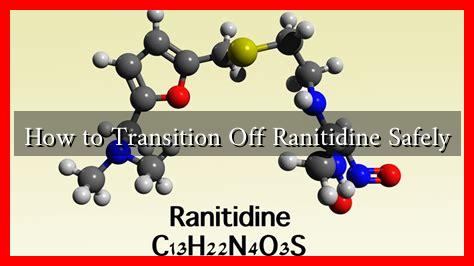-
Table of Contents
How to Transition Off Ranitidine Safely
Ranitidine, a medication commonly used to treat conditions like gastroesophageal reflux disease (GERD) and peptic ulcers, was widely prescribed for its ability to reduce stomach acid. However, in 2020, concerns arose regarding the presence of a potential carcinogen, N-nitrosodimethylamine (NDMA), in ranitidine products, leading to its withdrawal from the market. For many individuals who have relied on this medication, transitioning off ranitidine safely is crucial. This article provides a comprehensive guide on how to do so effectively.
Understanding Ranitidine and Its Uses
Ranitidine belongs to a class of drugs known as H2 blockers, which work by decreasing the amount of acid produced by the stomach. It has been used to treat:
- Gastroesophageal reflux disease (GERD)
- Peptic ulcers
- Zollinger-Ellison syndrome
- Heartburn and indigestion
Despite its effectiveness, the discovery of NDMA in ranitidine has prompted many to seek alternatives. Understanding how to transition off this medication safely is essential for maintaining digestive health.
Consulting Your Healthcare Provider
The first step in transitioning off ranitidine is to consult with your healthcare provider. They can assess your specific situation and recommend a tailored plan. Here are some key points to discuss:
- Your current dosage and duration of ranitidine use
- Any underlying health conditions
- Alternative medications or therapies
- Potential withdrawal symptoms
Healthcare professionals can provide guidance on tapering off the medication gradually, which can help minimize withdrawal symptoms and rebound acid secretion.
Gradual Tapering: A Safer Approach
Suddenly stopping ranitidine can lead to rebound symptoms, where the stomach produces more acid than before. To avoid this, a gradual tapering approach is recommended. Here’s how to do it:
- Reduce your dosage incrementally over a few weeks.
- Monitor your symptoms closely during this period.
- Consider switching to a lower-dose alternative medication, such as famotidine, if necessary.
For example, if you are taking 150 mg of ranitidine twice daily, you might reduce it to 150 mg once daily for a week, then 75 mg once daily for another week, before discontinuing completely.
Exploring Alternative Treatments
As you transition off ranitidine, exploring alternative treatments can help manage your symptoms effectively. Some options include:
- Proton Pump Inhibitors (PPIs): Medications like omeprazole and esomeprazole can be effective in reducing stomach acid.
- Antacids: Over-the-counter antacids can provide quick relief for occasional heartburn.
- Lifestyle Changes: Dietary modifications, weight management, and avoiding triggers (like spicy foods and caffeine) can significantly improve symptoms.
Incorporating these alternatives can help maintain your quality of life while reducing reliance on medications.
Monitoring and Managing Symptoms
During the transition, it’s essential to monitor your symptoms closely. Keep a journal to track:
- Frequency and severity of heartburn or acid reflux
- Dietary habits and any potential triggers
- Any new symptoms that arise
This information can be invaluable for your healthcare provider in adjusting your treatment plan as needed.
Conclusion
Transitioning off ranitidine safely requires careful planning and consultation with a healthcare provider. By gradually tapering your dosage, exploring alternative treatments, and monitoring your symptoms, you can effectively manage your digestive health without the risks associated with ranitidine. Remember, every individual’s experience is unique, so personalized guidance is key to a successful transition.
For more information on managing acid reflux and alternative treatments, consider visiting the Mayo Clinic’s GERD page.


